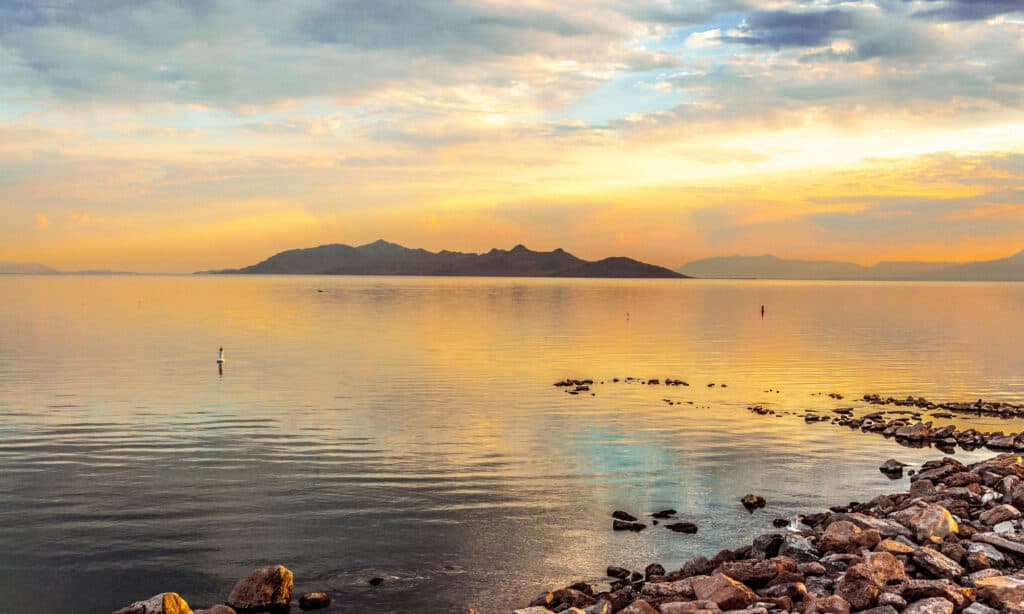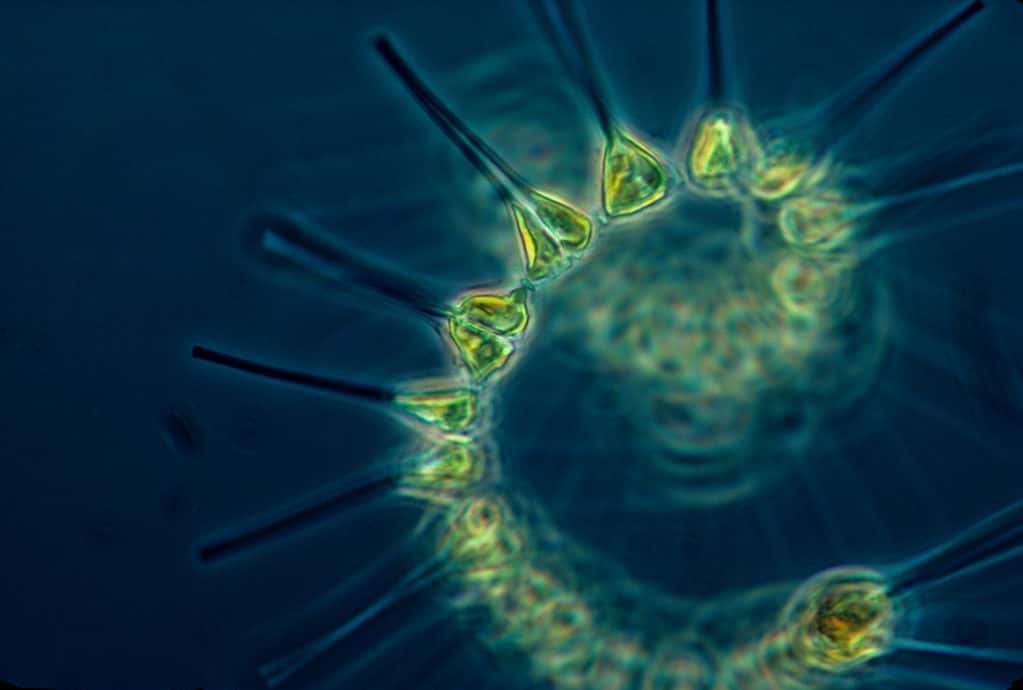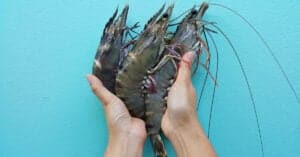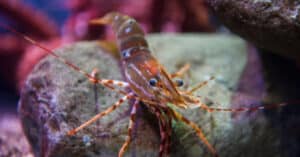Brine shrimp are a whole genus of microscopic crustaceans that are exceptionally common zooplankton distributed all over the world. They are known scientifically as Artemia. These little creatures are technically not shrimp, although they belong to the same family of crustaceans as shrimp, crabs, and lobsters.
The brine shrimp has a lot of distinctive characteristics. If you’ve ever wondered why sea monkeys and brine shrimp have similar appearances, it’s because they belong to the same species. To enhance their appeal to children, the nickname “sea monkeys” was coined by the marketing industry.
Brine Shrimp Habitat
Brine shrimp have not needed to develop at all for more than a hundred million years since they have been well-adapted for survival. These creatures are so adaptive that they can even spend more than 30 minutes in fresh water.
Eggs of brine shrimp can endure being in space, subjected to radiation, or even being dried out. Although the typical ocean salinity is just approximately 3.5%, adult brine shrimp may even thrive in water with a salinity of up to 50%. Talk about resilience!
Brine shrimps are saltwater organisms, yet they can’t exist in the oceans; instead, they can only be found in inland saltwater lakes. This is due to their main line of defense against potential freshwater predators is their capacity to survive in highly salinized water.
Nevertheless, since all predators in saltwater oceans and seas can easily thrive there, this protection system is ineffective there. Thankfully, there are several salty inland bodies, like the Great Salt Lake in Utah, and numerous more spread over California, New Mexico, and other parts of the planet.

Brine shrimps are saltwater organisms, yet they can’t exist in the oceans; instead, they can only be found in inland saltwater lakes.
©iStock.com/rinriver0423
What Do Brine Shrimp Eat?
Since brine shrimp are zooplankton or plankton made of plants, they consume phytoplankton. In essence, brine shrimps are opportunistic feeders that acquire whatever bits of food they can screen from the water that flows around them to maintain life.
This often indicates that their primary food supply in the wild is algae. Archaea, cyanobacteria, debris from dead plants, and even single-celled creatures like diatoms are examples of this type of algae.
What do these little guys eat in captivity? Because these creatures are filter eaters, almost any organic substance can be used as food as long as it’s given to them in small enough bits for absorption.
The most typical brine shrimp foods you’ll find people using are wheat flour, soybean powder, whey, powdered spirulina algae, and even powdered spirulina algae. Despite not being a plant-based meal, even egg yolks make an excellent brine shrimp food.
The brine shrimp’s nutritional requirements are somewhat lax. Everything that it can hold in its tiny graspers, it will eat. Anything that is small enough, non-lethal, and healthy will be eaten by shrimp. Any meal you feed them should be broken up. If the bits are too large, the shrimp won’t be able to eat them.
These creatures will start eating the yolk of the egg from which they hatched as soon as they are born. After around 24 hours, they will require food, so plan ahead. The best time for fish to consume them, though, is right now. After eating the egg yolk, their fat content rises noticeably.

Since brine shrimp are zooplankton or plankton made of plants, they consume phytoplankton.
©Porco_Rosso/Shutterstock.com
Caring For Brine Shrimp
No matter if you choose to feed your brine shrimp yolk or algae, it’s imperative to avoid overcrowding their habitat. That won’t just be worthless; it will also taint the tank’s water and reduce the oxygen content.
In order for these critters to absorb the nutrients, it is recommended to drop little amounts of food repeatedly throughout the day. If you don’t want to hassle or don’t spend a great deal of time at home, you can alternatively install a simple drip feeder.
Brine shrimp should consume food every day. These small shrimp should have a limitless amount of food since they are filter feeders. Several individuals feed the shrimp less often since there is too much food in their aquariums.
Brine shrimp may survive without food for between one and three days following eating their egg yolk. If you continue to deprive them of food, they will die. All your attempts will have been in vain if the shrimp die. Make sure you only feed them a little each day. Establishing the routine of supplying food is excellent.
More food should be added to their tank if you anticipate missing a day so that there is enough to last the following day. But ensure that you examine the water parameters when you get back. They might have become out of whack due to the increased meals.

Brine shrimp should have a limitless amount of food since they are filter feeders.
©Kendo Nice/Shutterstock.com
Up Next
- The Deadly Powers Of Pistol Shrimps
- 10 Incredible Shrimp Facts
- Prawns vs Shrimp: Main Differences Explained
- Watch a Mantis Shrimp Defeat an Octopus In Amazing Deep Sea Boxing Match
The photo featured at the top of this post is © Dan Olsen/Shutterstock.com
FAQs (Frequently Asked Questions)
What do brine shrimp eat?
Since brine shrimp are zooplankton or plankton made of plants, they consume phytoplankton. In essence, brine shrimps are opportunistic feeders that acquire whatever bits of food they can screen from the water that flows around them to maintain life.
What's something cool I should know about brine shrimp?
Brine shrimp have not needed to develop at all for more than a hundred million years since they have been well-adapted for survival. These creatures are so adaptive that they can even spend more than 30 minutes in fresh water.
Thank you for reading! Have some feedback for us? Contact the AZ Animals editorial team.






